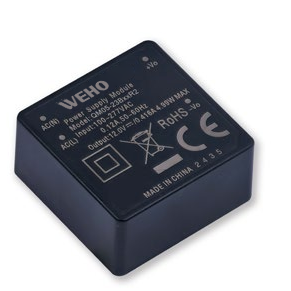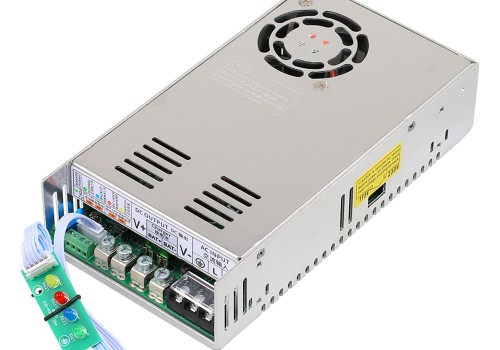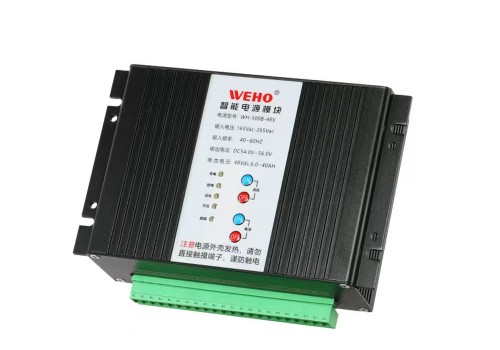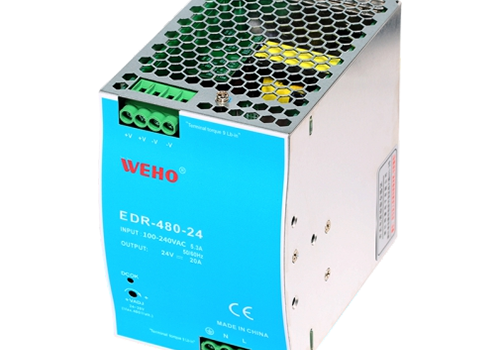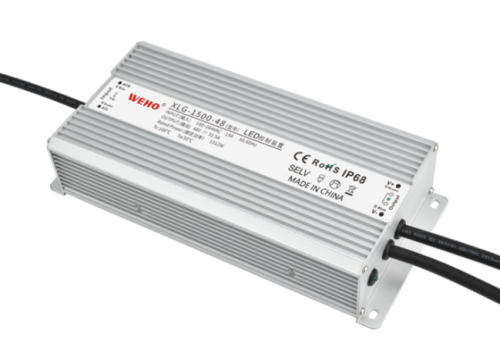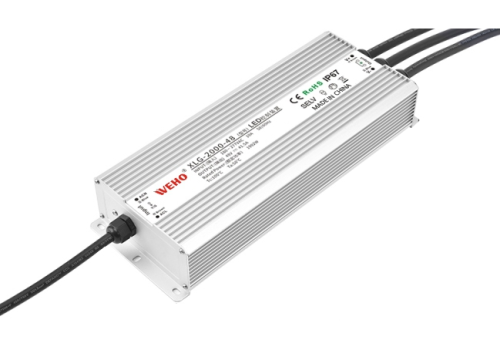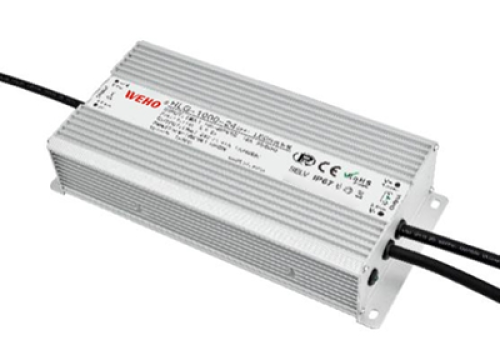In the world of electronics and power systems, understanding the distinction between isolated and non-isolated power supplies is crucial. Whether you’re designing medical equipment, industrial controllers, or audio pedals, choosing the right type of power supply directly impacts safety, efficiency, and performance. This article explores the fundamental differences between isolated and non-isolated power supplies, helping you determine the right fit for your application.
Learn More: A Comprehensive Guide to Understanding Switch Power Supplies
Understand Isolated and Non-Isolated Power Supplies
What is an Isolated Power Supply?
An isolated power supply uses a transformer to electrically separate the input and output. This means there’s no direct path for current to flow between the input and output grounds. The main goal is safety—especially when high voltage or human contact is involved. This type of power supply helps reduce the risk of electric shock and prevents noise from propagating between circuits.
Learn More: How Do Switch Mode Power Supplies Work
What is a Non-Isolated Power Supply?
A non-isolated power supply does not have this separation. The input and output share a common ground, which allows for a more compact design and higher energy efficiency. These are often referred to as point-of-load (POL) converters and are ideal for applications with tight space and low voltage differences.
Learn More: Understanding Switching Power Supply Production
9 Key Differences Between Isolated and Non-Isolated Power Supplies
| Aspect | Isolated Power Supply | Non-Isolated Power Supply |
|---|---|---|
| Safety | Provides electrical isolation between input and output, reducing risk of electric shock. | No isolation; input and output share the same ground, which may pose a safety risk. |
| EMI & Noise | Superior noise and EMI suppression due to transformer barrier. | More susceptible to EMI and noise coupling between circuits. |
| Efficiency | Typically less efficient due to transformer losses. | High efficiency (often >95%) with minimal energy loss. |
| Size | Larger in size because of transformer and insulation components. | Compact and lightweight, ideal for space-limited applications. |
| Design Complexity & Cost | More complex and costly to design and certify. | Simpler design and lower cost in both design and manufacturing. |
| Voltage Range & Flexibility | Supports wide input/output voltage ranges and high-voltage conversions. | Limited to low-voltage applications with narrower voltage range. |
| Typical Applications | Medical devices, industrial automation, communication systems. | Consumer electronics, LED lighting, sensors, portable devices. |
| Product Role | Serves as primary power isolation unit or upstream converter. | Functions as point-of-load (POL) or local step-down converter. |
| Scalability | More difficult to scale due to size and isolation needs. | Easy to scale and integrate in systems with multiple power rails. |
Safety
Isolated power supplies provide a physical barrier that protects users and sensitive components from hazardous voltages. This is why isolated power supply pedals are popular in audio equipment where electrical noise and shock risk must be minimized. Non-isolated power supplies, on the other hand, offer no such protection and should only be used where isolation isn’t a critical requirement.
EMI and Noise
Because of the transformer barrier, isolated supplies significantly reduce electromagnetic interference (EMI) between circuits. This makes them suitable for medical and communication systems. Non-isolated versions are more prone to noise coupling, especially in high-frequency environments.
Efficiency
Non-isolated power supplies usually achieve greater than 95% efficiency because they avoid the transformer losses present in isolated supplies. Isolated units have slightly lower efficiency but trade it for better protection and noise control.
Learn More: Delving into the Depths: How Power Supplies (SMPS) Achieve Efficient Power Conversion
Size
Transformers and protective components make isolated power supplies bulkier. In contrast, non-isolated options are smaller, lighter, and ideal for integration into space-constrained PCBs or compact devices.
Design Complexity and Cost
Isolated designs are more complex and costly to develop due to the inclusion of high-voltage insulation, safety certifications, and transformer design. Non-isolated supplies are easier to implement and more cost-effective in mass production.
Voltage Range and Flexibility
Isolated power supplies handle a wider range of input and output voltages, including AC-DC or high DC-DC conversion scenarios. Non-isolated supplies are more limited in voltage handling and typically used in low-voltage, step-down applications.
Learn More: A Comprehensive Guide to DC to DC Converters
Typical Applications
Isolated power supplies are used in medical devices, industrial systems, and communications infrastructure—anywhere safety and interference isolation are paramount. Non-isolated supplies are common in LED drivers, consumer electronics, sensors, and portable devices.
Product Role
Isolated units often serve as the main system power supply or upstream converter, while non-isolated units are used closer to the load, stepping down voltages as needed. Many systems use both types in tandem for cost-efficiency and performance balance.
Scalability
Non-isolated power supplies scale better for systems requiring multiple output rails or distributed power across compact modules. Isolated power supplies, while scalable, require more planning and space allocation per channel.
Advantages of Isolated Power Supplies
Isolated power supplies are essential in applications where safety, noise immunity, and voltage flexibility are critical. By electrically separating the input and output, they help protect users from electric shock and prevent interference between circuits. This makes them ideal for medical devices, industrial systems, and audio equipment.
For a reliable and efficient solution, the Weho QM15-23BxxR2 AC/DC On-Board Converter is a strong choice. It delivers 15W of regulated power with 4000VAC isolation, supports a wide input range of 85–305VAC, and operates in extreme temperatures from -40°C to +85°C. With up to 87% efficiency, built-in protections, and international safety certifications, it’s well-suited for demanding environments such as telecom systems, smart appliances, and renewable energy installations.
Learn More: Why choose WEHO Switching Power Supply
Advantages of Non-Isolated Power Supplies
Non-isolated power supplies are valued for their high efficiency, compact size, and cost-effectiveness. Without the need for a transformer, they achieve excellent energy conversion with minimal heat generation, making them ideal for space-constrained applications. Their straightforward design also allows for easy integration and lower production costs.
For engineers seeking a reliable non-isolated solution, Weho’s K78xx-2000R3 DC/DC Power Module stands out. With up to 96% efficiency and ultra-low no-load current, it supports high-output performance without requiring external heat sinks. Its wide input voltage range, robust 2000mA output, and operation from -40℃ to +85℃ make it a practical choice for telecom, industrial automation, and high-density electronic systems. Compact, durable, and LM78xx-compatible, it offers a drop-in upgrade path for existing designs needing more efficient power regulation.
Learn More: Uses, advantages and working principle of a switching power supply
Conclusion
Choosing between isolated and non-isolated power supplies depends on your specific application needs. If safety, EMI reduction, or high voltage handling is crucial, isolated supplies are the better choice. For high-efficiency, compact, and cost-sensitive designs, non-isolated options are ideal. Both types play important roles in today’s power architecture, and understanding their differences is key to designing reliable, efficient systems.
Whether you’re designing a 24V isolated power supply for an industrial controller or optimizing a lighting circuit with non-isolated converters, the right decision starts with understanding these fundamental differences.




